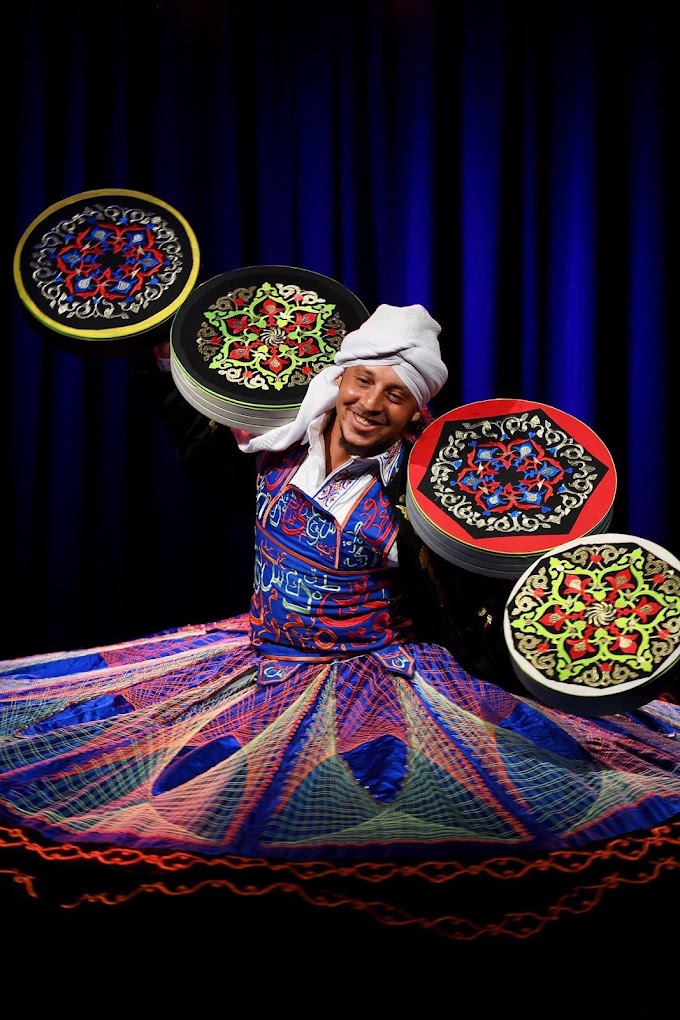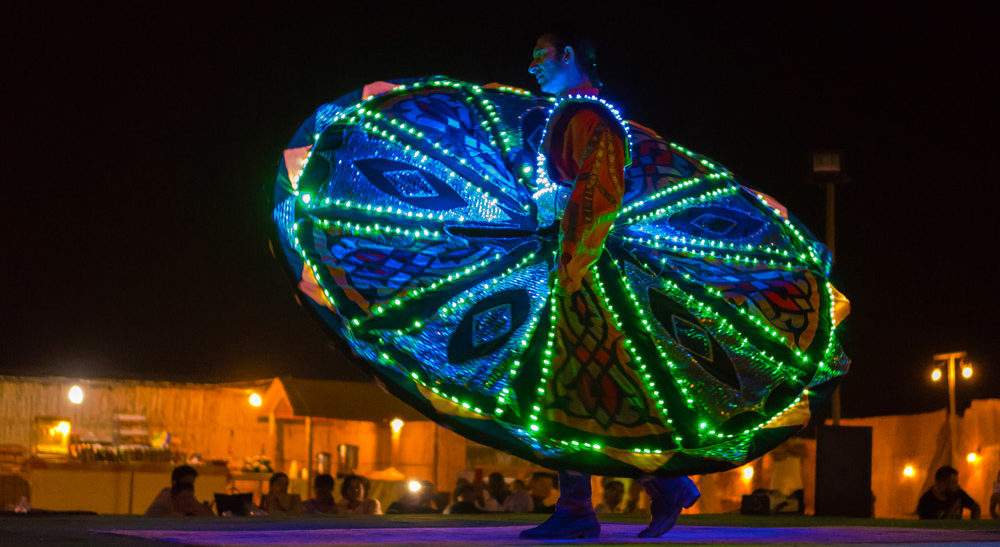
The Tanoora show is a traditional dance performance that originates from the Sufi culture of Egypt and the Middle East. It is characterized by the use of colorful costumes, whirling movements, and mesmerizing music that create a captivating and spiritual atmosphere. The performance involves a male dancer known as a dervish who spins continuously in a circular motion while wearing a long, flowing skirt that represents the spinning cosmos. The dervish moves in a trance-like state, with his eyes closed, as he spins faster and faster, seemingly defying the laws of gravity. The Tanoora show is a deeply spiritual and awe-inspiring experience that celebrates the beauty and mysticism of Sufi culture. It is a popular attraction for tourists visiting Egypt and other parts of the Middle East, but it is also cherished by locals who value and respect their cultural heritage.
Tanoora as a lifestyle
The Tanoora dance is deeply rooted in the Sufi tradition, a mystical Islamic movement that emphasizes the inward search for God through meditation, prayer, and contemplation. Sufism is often associated with asceticism, simplicity, and a rejection of materialism, and many Sufi practitioners lead a simple and modest lifestyle. The Tanoora performers, also known as dervishes, are highly respected members of the Sufi community, and their performances are often seen as a form of spiritual devotion.
Tanoora performers may spend many years training to perfect their craft, and they often live in Sufi communities or religious centers. Their lifestyle is characterized by a strong commitment to their spiritual beliefs, and they may spend many hours each day in prayer and contemplation. Many Tanoora performers also engage in charitable work and community service, as these are considered important aspects of Sufi practice.
Despite the spiritual focus of their lifestyle, Tanoora performers are also highly skilled entertainers who have honed their craft to perfection. They may perform at cultural events, religious festivals, or other occasions where their talents are appreciated and celebrated. Through their performances, Tanoora performers aim to inspire and uplift their audience, and to share the beauty and mysticism of their Sufi tradition with the wider world.
Things you didn’t know about Tanoora
The Tanoora dance is also known as the “whirling dervish” dance, and it has been performed for centuries by Sufi practitioners in Egypt and other parts of the Middle East.
The dance is traditionally performed by men, but in some parts of the world, women also perform the Tanoora dance.
The long, flowing skirt worn by the Tanoora performer represents the ego and the physical world, which is left behind as the dancer spins and moves towards the spiritual realm.
The Tanoora dance is not just a form of entertainment but is also seen as a form of meditation and spiritual practice, with the dancer seeking to achieve a state of trance or ecstasy.
The music accompanying the Tanoora dance is often played on traditional Middle Eastern instruments, such as the oud, ney, and darbuka, and it is meant to induce a state of spiritual transcendence in the performer and the audience.
The Tanoora dance has inspired many artists and musicians around the world, with the likes of Sting, Madonna, and Loreena McKennitt all incorporating elements of the Tanoora dance into their music and performances.
In 2017, UNESCO recognized the Tanoora dance as part of the intangible cultural heritage of humanity, acknowledging its importance as a symbol of the Sufi tradition and the cultural identity of the Middle East.



